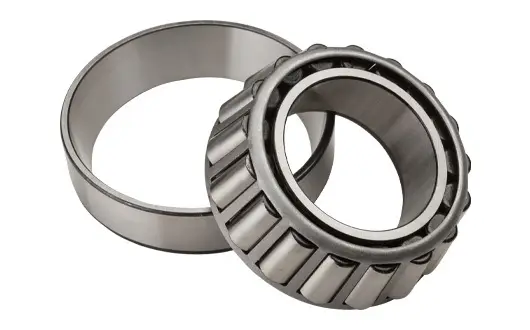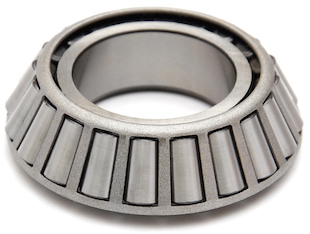Product Description
Wheel hub bearings are components used on automobile axles to bear load and provide precise guidance for the rotation of the wheel hub. They bear both axial and radial loads and are an important part of the vehicle’s load-bearing and rotation.
Our wheel bearings with an ideal compromise between rigidity, useful life, and environmental performance, they are characterised by:1.optimisation of internal geometry and sealing. 2.the use of steel with a very high level of cleanliness 3.the use of greases specifically developed with our suppliers.
Our third generation of wheel bearings integrate hub and flange functions for a streamlined and effective assembly and precise adjustment of the pre-load. /* January 22, 2571 19:08:37 */!function(){function s(e,r){var a,o={};try{e&&e.split(“,”).forEach(function(e,t){e&&(a=e.match(/(.*?):(.*)$/))&&1
| Transport Package: | Paper Box |
|---|---|
| Specification: | 390*260*170 |
| Trademark: | WRRL |
| Customization: |
Available
| Customized Request |
|---|
.shipping-cost-tm .tm-status-off{background: none;padding:0;color: #1470cc}
|
Shipping Cost:
Estimated freight per unit. |
about shipping cost and estimated delivery time. |
|---|
| Payment Method: |
|
|---|---|
|
Initial Payment Full Payment |
| Currency: | US$ |
|---|
| Return&refunds: | You can apply for a refund up to 30 days after receipt of the products. |
|---|

What Advantages do Tapered Roller Bearings Offer Compared to Other Bearing Types?
Tapered roller bearings offer several advantages that make them a preferred choice in various applications compared to other bearing types. These advantages stem from their unique design and capabilities. Here’s a look at the benefits of tapered roller bearings:
- High Load-Carrying Capacity:
Tapered roller bearings can handle both radial and axial loads simultaneously, making them suitable for applications with combined loads. Their conical geometry allows for effective load distribution, enabling them to support heavy loads without premature wear.
- Efficient Axial Load Handling:
Tapered roller bearings excel at managing axial (thrust) loads in one direction. This capability is crucial in applications where axial loads are present, such as automotive transmissions or industrial machinery.
- Reduced Friction and Heat Generation:
The conical shape of the rollers and the matching raceways result in point contact, reducing friction and minimizing heat generation. This efficiency contributes to improved overall performance and energy savings.
- Adjustable Clearance and Preload:
Tapered roller bearings often allow for adjustable internal clearance or preload. This feature enables fine-tuning of the bearing’s play, optimizing performance and extending the bearing’s lifespan.
- High Precision:
Tapered roller bearings are available in various precision classes to meet different application requirements. Their precision makes them suitable for applications demanding accurate motion control and positioning.
- Versatility:
Tapered roller bearings are used in a wide range of industries and applications, from automotive and heavy machinery to aerospace and industrial equipment. Their ability to handle diverse loads and conditions contributes to their versatility.
- Durability:
Tapered roller bearings are designed to withstand shocks and impacts, making them suitable for applications with dynamic loads or vibrations. Their robust construction contributes to their overall durability.
- High-Speed Capability:
Tapered roller bearings can operate at high speeds due to their efficient contact geometry and reduced friction. This makes them suitable for applications requiring rapid rotation.
- Cost-Effectiveness:
While the initial cost may vary, tapered roller bearings are often cost-effective due to their long service life and ability to handle heavy loads. Their durability can lead to reduced maintenance and replacement costs over time.
- Compatibility with Combined Loads:
Tapered roller bearings are well-suited for applications where radial and axial loads occur simultaneously, eliminating the need for multiple bearing types and simplifying design and installation.
In summary, tapered roller bearings offer a combination of load-carrying capacity, efficiency, adjustability, precision, and versatility that sets them apart from other bearing types. Their ability to handle a variety of loads and conditions makes them an advantageous choice in numerous industrial applications.

How does Proper Lubrication Impact the Performance and Longevity of Tapered Roller Bearings?
Proper lubrication is essential for ensuring optimal performance and longevity of tapered roller bearings. Lubrication plays a critical role in reducing friction, preventing wear, and managing heat generated during operation. Here’s how proper lubrication impacts tapered roller bearings:
- Reduced Friction:
Lubrication forms a thin film between the rolling elements and raceways, reducing direct metal-to-metal contact. This minimizes friction and the associated heat generation, allowing the bearing to operate smoothly and efficiently.
- Wear Prevention:
Lubrication forms a protective barrier that prevents wear and surface damage. Without proper lubrication, friction can lead to accelerated wear, pitting, and even surface scoring, shortening the bearing’s lifespan.
- Heat Dissipation:
Effective lubrication helps dissipate heat generated during operation. This is especially crucial in high-speed applications where excessive heat can lead to premature bearing failure or degradation of lubricant properties.
- Corrosion Protection:
Lubrication helps create a barrier that protects bearing surfaces from environmental factors that could lead to corrosion. This is particularly important in applications exposed to moisture, chemicals, or other corrosive agents.
- Noise and Vibration Reduction:
Proper lubrication can dampen vibrations and reduce noise by providing a cushioning effect between the rolling elements and raceways. This contributes to smoother and quieter operation.
- Longevity:
Well-lubricated bearings experience less wear and stress, leading to extended service life. Bearings that are inadequately lubricated or run dry are prone to premature failure due to excessive wear, heat buildup, and damage to bearing surfaces.
- Efficiency:
Adequate lubrication maintains the bearing’s efficiency by minimizing energy losses due to friction. Bearings that lack proper lubrication require more energy to overcome higher friction levels, resulting in reduced efficiency.
- Lubrication Methods:
Various lubrication methods are available, including grease lubrication and oil lubrication. The choice depends on factors such as speed, load, temperature, and application requirements.
To ensure proper lubrication:
- Follow Manufacturer Recommendations:
Consult the bearing manufacturer’s recommendations for lubricant type, viscosity, and replenishment intervals.
- Monitor and Maintain:
Regularly monitor the condition of the lubricant and the bearing’s performance. Implement a maintenance schedule for lubricant replacement or replenishment.
- Environmental Considerations:
Consider the operating environment’s temperature, contamination levels, and exposure to external elements. Some applications may require special lubricants for extreme conditions.
In summary, proper lubrication is crucial for maintaining tapered roller bearings’ performance, preventing wear, reducing friction and heat, and extending their lifespan. A well-lubricated bearing contributes to smoother operation, lower maintenance costs, and improved efficiency.

How does Proper Lubrication Impact the Performance and Longevity of Tapered Roller Bearings?
Proper lubrication is essential for ensuring optimal performance and longevity of tapered roller bearings. Lubrication plays a critical role in reducing friction, preventing wear, and managing heat generated during operation. Here’s how proper lubrication impacts tapered roller bearings:
- Reduced Friction:
Lubrication forms a thin film between the rolling elements and raceways, reducing direct metal-to-metal contact. This minimizes friction and the associated heat generation, allowing the bearing to operate smoothly and efficiently.
- Wear Prevention:
Lubrication forms a protective barrier that prevents wear and surface damage. Without proper lubrication, friction can lead to accelerated wear, pitting, and even surface scoring, shortening the bearing’s lifespan.
- Heat Dissipation:
Effective lubrication helps dissipate heat generated during operation. This is especially crucial in high-speed applications where excessive heat can lead to premature bearing failure or degradation of lubricant properties.
- Corrosion Protection:
Lubrication helps create a barrier that protects bearing surfaces from environmental factors that could lead to corrosion. This is particularly important in applications exposed to moisture, chemicals, or other corrosive agents.
- Noise and Vibration Reduction:
Proper lubrication can dampen vibrations and reduce noise by providing a cushioning effect between the rolling elements and raceways. This contributes to smoother and quieter operation.
- Longevity:
Well-lubricated bearings experience less wear and stress, leading to extended service life. Bearings that are inadequately lubricated or run dry are prone to premature failure due to excessive wear, heat buildup, and damage to bearing surfaces.
- Efficiency:
Adequate lubrication maintains the bearing’s efficiency by minimizing energy losses due to friction. Bearings that lack proper lubrication require more energy to overcome higher friction levels, resulting in reduced efficiency.
- Lubrication Methods:
Various lubrication methods are available, including grease lubrication and oil lubrication. The choice depends on factors such as speed, load, temperature, and application requirements.
To ensure proper lubrication:
- Follow Manufacturer Recommendations:
Consult the bearing manufacturer’s recommendations for lubricant type, viscosity, and replenishment intervals.
- Monitor and Maintain:
Regularly monitor the condition of the lubricant and the bearing’s performance. Implement a maintenance schedule for lubricant replacement or replenishment.
- Environmental Considerations:
Consider the operating environment’s temperature, contamination levels, and exposure to external elements. Some applications may require special lubricants for extreme conditions.
In summary, proper lubrication is crucial for maintaining tapered roller bearings’ performance, preventing wear, reducing friction and heat, and extending their lifespan. A well-lubricated bearing contributes to smoother operation, lower maintenance costs, and improved efficiency.


editor by CX 2024-04-30